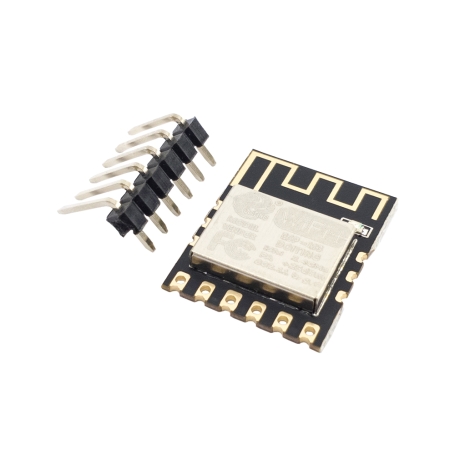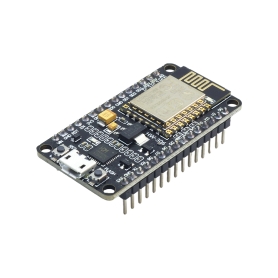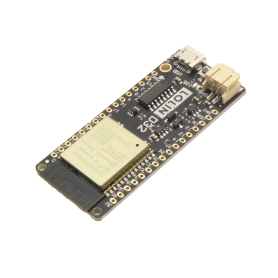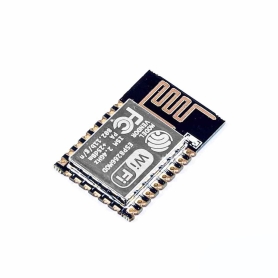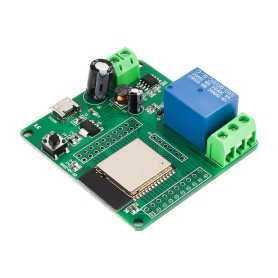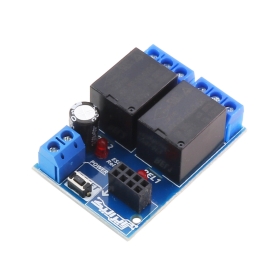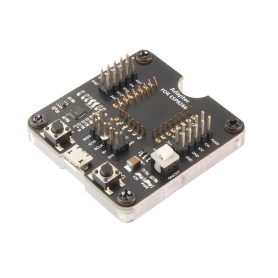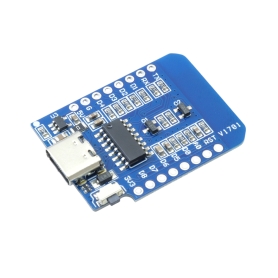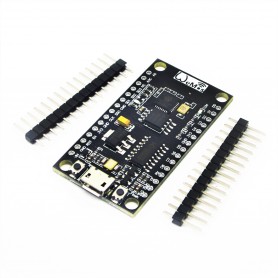
ماژول ESP8285 ESP-M3 بر پایه چیپ قدرتمند ESP8285 طراحی شده است که نسخهای ارتقایافته از ESP8266 با حافظه فلش داخلی 1 مگابایت به شمار میآید. این ماژول از یک پردازنده 32 بیتی بهره میبرد که قابلیت اجرا در فرکانسهای 80 یا 160 مگاهرتز را دارد. ماژول قابلیت عملکرد مستقل بهعنوان کنترلر شبکه یا بهصورت جانبی با یک میکروکنترلر میزبان را دارد. این ماژول از پروتکلهای کامل TCP/IP و استانداردهای IEEE 802.11 b/g/n پشتیبانی کرده و از طریق رابطهایی مانند UART، SPI، I2C و GPIO قابلیت ارتباط با سایر سیستمها را فراهم میسازد. پشتیبانی از حالتهای مختلف شبکه از جمله Station، SoftAP و ترکیبی (AP+STA) به همراه قابلیتهای پیشرفتهای مانند SmartConfig، بهروزرسانی OTA و رمزنگاری سختافزاری، ESP-M3 را به گزینهای مناسب برای توسعه سیستمهای بیسیم کممصرف و کوچک تبدیل کرده است.
مشخصات
ماژول ESP8285 ESP-M3
بر پایه چیپ قدرتمند ESP8285
حافظه فلش داخلی: 1 مگابایت
پروتکلهای بیسیم: IEEE 802.11 b/g/n/e/i
حالتهای کاری: Station، SoftAP، SoftAP+STA
رابطها: UART، SPI، I2C، I2S، GPIO، PWM، ADC، EN، Wakeup
دقت ADC برابر 10 بیت
جریان در حالت خواب عمیق: حدود 10 میکروآمپر
توان مصرفی در حالت آمادهبهکار: کمتر از 1 میلیوات (DTIM3)
زمان بیدار شدن و اتصال: کمتر از 2 میلیثانیه
قابلیت رمزنگاری سختافزاری: WEP، WPA/WPA2، TKIP، CCMP، WAPI
ابعاد: بسیار کوچک (مناسب کاربردهای فشرده)
دمای کاری: منفی 40 تا مثبت 125 درجه سانتیگراد
کاربردها
پروژههای اینترنت اشیا (IoT)
کنترل از راه دور بیسیم
اتوماسیون خانگی و صنعتی
افزودن ارتباط WiFi به سیستمهای میکروکنترلری
ماژولهای هوشمند قابل برنامهریزی
بهروزرسانی از راه دور و مانیتورینگ شبکه
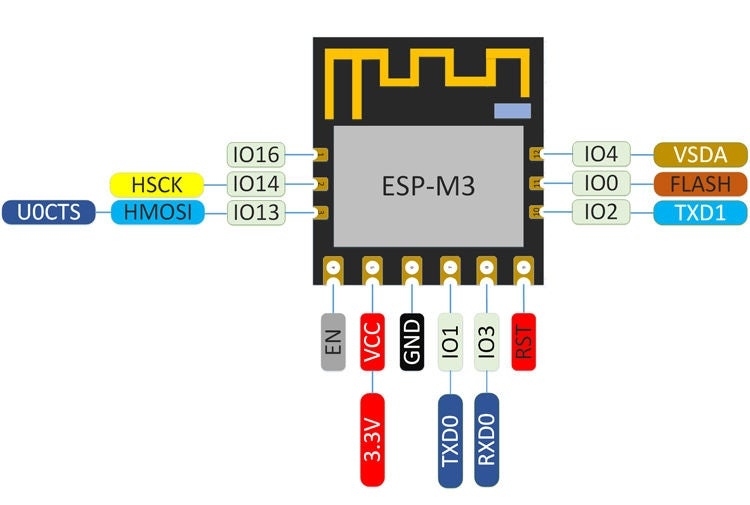
Introduction
The WiFi module ESP-M is manufactured by using a high-performance chip ESP8285. This small chip is encapsulated an enhanced Tensilica’sL106 diamond series 32-bit kennel CPU with a SRAM. Thus, ESP8285 has the complete function Wi-Fi function; it not only can be applied independently, but can be used as a slaver working with other host CPU. When ESP8285 is applied as a slaver, it can start from the onboard Flash. The built-in high-speed buffer is not only benefit to improve the system performance, but optimize the store system. In addition, ESP8285 can be used as Wi-Fi adapter by SPI/SDIO or I2C/UART interface, when it is applied to other MCU design. The ESP-M module supports the standard IEEE802.11 b/g/n/e/i protocol and the complete TCP/IP protocol stack. User can use it to add the WiFi function for the installed devices, and also can be viewed as a independent network controller. Anyway, ESP-M module provides many probabilities with the best price.
Features
Ultra-small size;
Support serial to WiFi;
Wireless transparent transmission;
Long distance transmission with ultra-low power;
Bearing high temperature to 125 ℃, compared to the 85℃ for ESP8266.
Specification
SOC characteristics
Built-in Tensilica L106 ultra-low power 32-bit CPU, main frequency supports 80MHz and160MHz, and RTOS;
Built-in TCP/IP protocol;
Built-in one-channel 10-bit high precision ADC;
Outboard interface: HSPI, UART, I2C, I2S, IR Remote Controk, PWM, GPIO;
Deep sleep current is 10uA, the cut-off current is smaller than 5uA;
Wake-connect and transmission data package within 2ms;
The consume power is smaller 1.0Mw (DTIM3) when at stand by status;
Built in 1M byte for SPI Flash.
WiFi characteristics
Support 802.11 b/g/n/e/I;
Support Station, Soft AP, Soft AP+STA mode;
Support WiFi Direct (P2P);
Support CCMP (CBC-MAC, computation mode), TKIP (MIC, RC4), WAPI (SMS4), WEP (RC4), CRC etc., for hardware acceleration.
P2P finding, P2P GO mode/ GC mode and P2P power manage
WPA/PA2PSK and WPS;
802.11 security certification: pre-certification and TSN
Support 802.11n (2.4GHz);
802.1h/RFC1042 frame encapsulation;
Support seam less roaming;
Support AT remote update and cloud update (OTA);
Support Smart Config function (including Android and Ios device).
Module interface
2x UART;
1xADC;
1xEn;
1xwakeup pin;
1xHSPI;
1xI2C;
1xI2S
More than 10xGPIOs
Working temperature: -40℃-+125℃;



